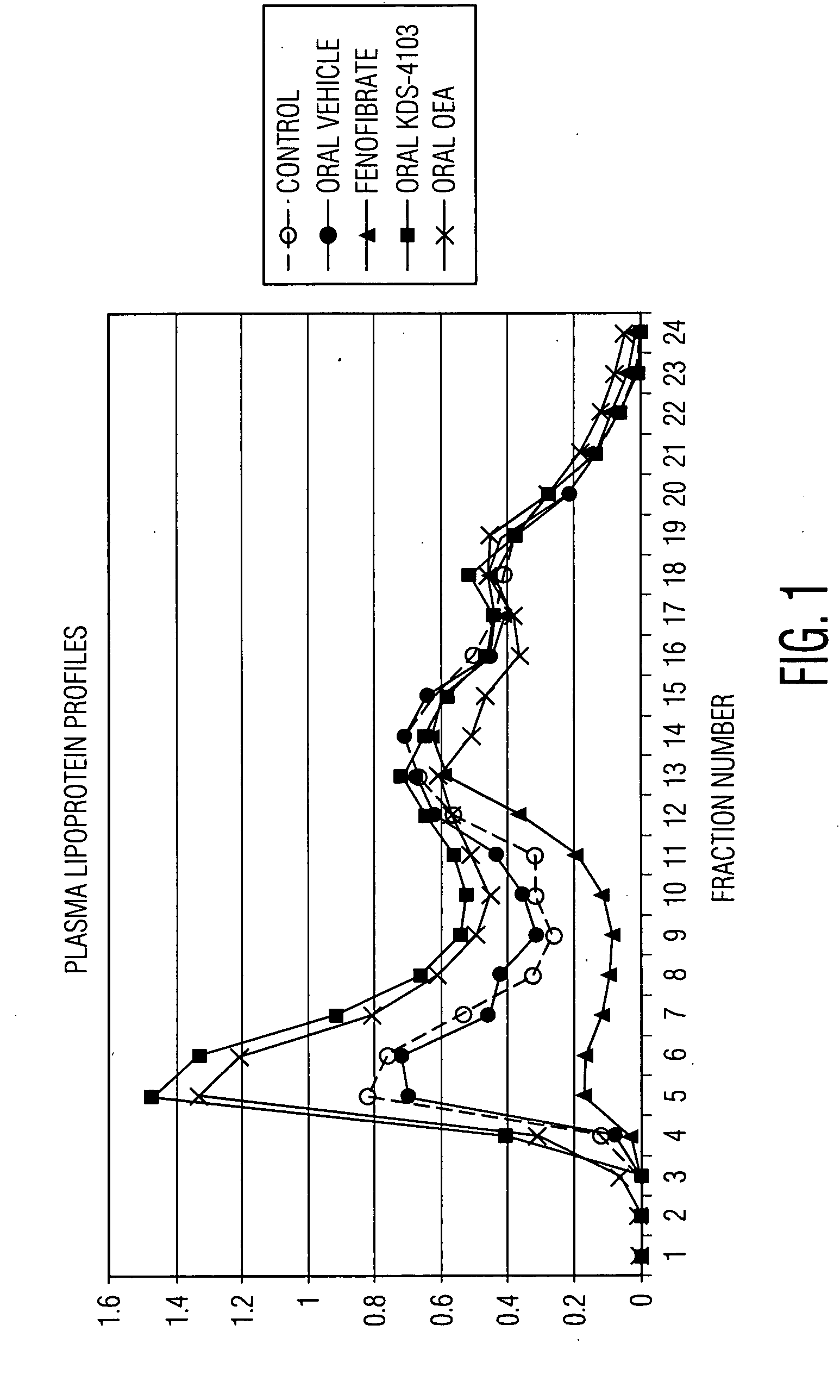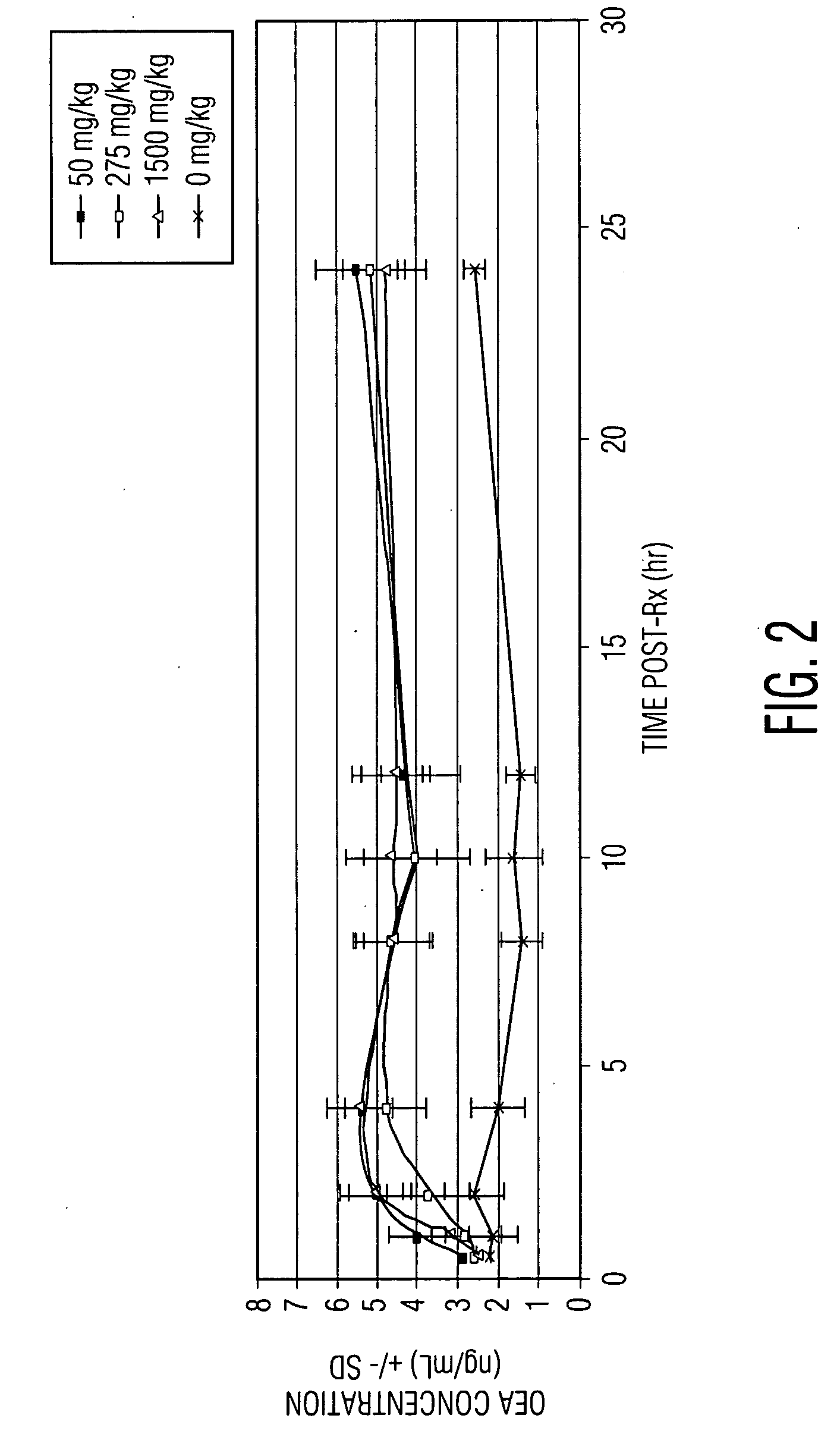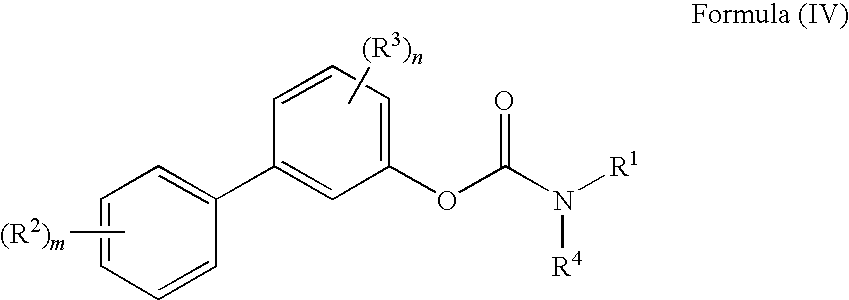Methods for treating energy metabolism disorders by inhibiting fatty acid amide hydrolase activity
a technology of fatty acid amide hydrolase and energy metabolism, which is applied in the direction of biocide, plant growth regulator, animal husbandry, etc., can solve the problems affecting the incidence and outcome of energy metabolism disorders and related conditions
- Summary
- Abstract
- Description
- Claims
- Application Information
AI Technical Summary
Benefits of technology
Problems solved by technology
Method used
Image
Examples
examples of faah
Inhibitors
[0070]The FAAH inhibitor compositions used in the methods described herein can come from a variety of sources including both natural (e.g., plant extracts) and synthetic.
[0071]A FAAH inhibitor used in the methods described herein can inhibit FAAH activity, in vitro, with an IC50 of less than 10 μM (e.g., 1 μM, 0.5 μM, or 0.01 μM).
Methods of Dosing and Treatment Regimens
[0072]The compounds described herein can be used in the preparation of medicaments for the inhibition of fatty acid amide hydrolase, or for the treatment of diseases or conditions that would benefit, at least in part, from inhibition of fatty acid amide hydrolase. In addition, a method for treating any of the diseases or conditions described herein in a subject in need of such treatment, involves administration of pharmaceutical compositions containing at least one FAAH inhibitor or a pharmaceutically acceptable salt, pharmaceutically acceptable N-oxide, pharmaceutically active metabolite, pharmaceutically a...
example 1
FAAH Inhibitors Reduce Body Weight Body Fat, and Liver Steatosis
[0083]We assessed the effect of inhibiting FAAH activity on body weight, body fat, triglyceride levels, cholesterol levels in APOE*3-Leiden transgenic (E3L) mice, an animal model of hyperlipidemia. E3L mice express a mutated variant of human apoE, apoE*3-Leiden, that has impaired binding of apoE to the LDL receptor. Consequently, E3L mice exhibit a decreased clearance rate of apoB-containing lipoproteins and elevated serum lipid levels. See van Vlijmen et al. (1994), J. Clin Invest., 93:1403-1410. Indeed, upon high fat and cholesterol feeding, these mice develop various stages of atherosclerotic lesions depending on plasma total cholesterol levels and resembling those found in humans. See Groot et al. (1996), Arterioscler. Thromb. Vasc. Biol., 16:926-933; Versch ren et al. (2005), Arterioscler. Thromb. Vasc Biol., 25:161-167; and Lutgens et al. (1999), Circulation; 99(2):276-283). Thus, the E3L mouse is a suitable model...
example 2
KDS-4103 Causes Prolonged Elevation of Plasma OEA Levels in Primates
[0110]We wished to examine the ability of KDS-4103 to increase OEA levels in primates. KDS-4103 at doses of 50-1500 mg / kg, or vehicle, was administered orally to cynomolgus monkeys. Afterwards, a time course of plasma OEA levels was determined for each subject by obtaining a plasma sample at 0.5, 1, 2, 4, 8, 12, and 24 hours post-administration. As shown in FIG. 2, in subjects administered each dose of KDS-4103, plasma OEA levels were clearly elevated two hours after administration, peaked at four hours, and remained elevated at all subsequent time points examined. On the basis of these data, we concluded that KDS-4103 is highly effective for increasing OEA levels in primates.
PUM
| Property | Measurement | Unit |
|---|---|---|
| Volume | aaaaa | aaaaa |
| Volume | aaaaa | aaaaa |
| Molar density | aaaaa | aaaaa |
Abstract
Description
Claims
Application Information
 Login to View More
Login to View More - R&D
- Intellectual Property
- Life Sciences
- Materials
- Tech Scout
- Unparalleled Data Quality
- Higher Quality Content
- 60% Fewer Hallucinations
Browse by: Latest US Patents, China's latest patents, Technical Efficacy Thesaurus, Application Domain, Technology Topic, Popular Technical Reports.
© 2025 PatSnap. All rights reserved.Legal|Privacy policy|Modern Slavery Act Transparency Statement|Sitemap|About US| Contact US: help@patsnap.com



